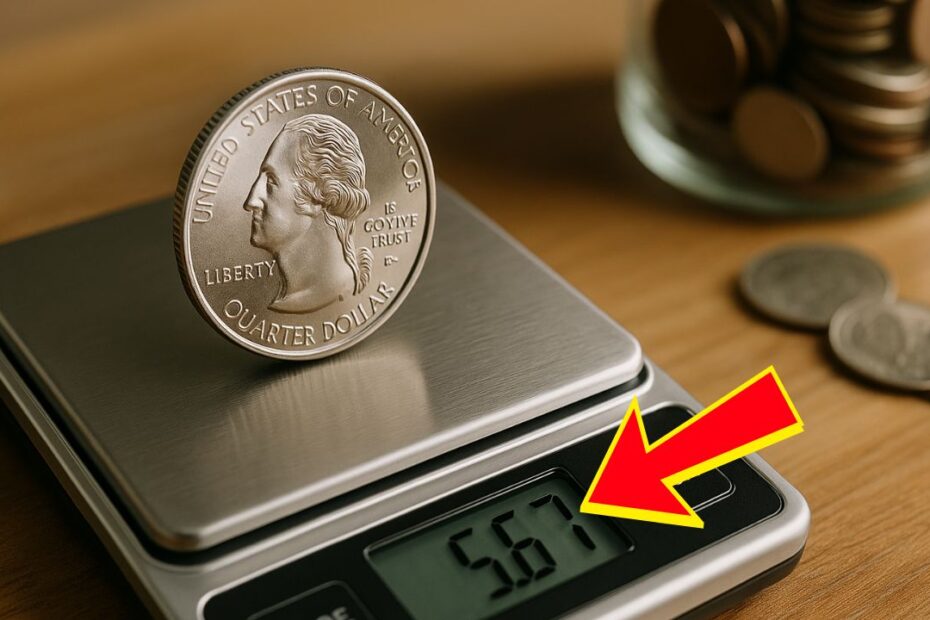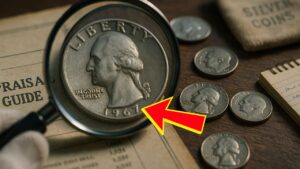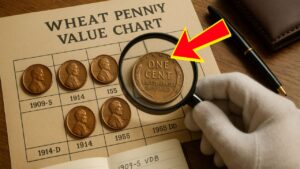The U.S. quarter is one of the most commonly used coins in America, representing 25 cents or a quarter of a dollar. While most people use quarters for everyday purchases, many are curious about their exact specifications, particularly how much a quarter weighs.
Knowing the weight of a quarter is essential not only for coin collectors but also for those interested in coinage history, vending machines, and metal composition.
In this article, we explore everything you need to know about the weight of a U.S. quarter, its historical changes, metal composition, and other fascinating details that make this coin unique.
What Is a Quarter?
A quarter is a coin that has been in circulation in the United States since 1796. It is primarily used in day-to-day transactions, coin collections, and even vending machines.
Quarters are known for their iconic design, which typically features George Washington on the obverse (front) and various designs on the reverse (back), including state-specific and commemorative editions.
While the face value is 25 cents, the coin’s physical characteristics, especially its weight, have evolved over the years.
The Standard Weight of a U.S. Quarter
Modern Quarters (1965–Present)
The current standard quarter, introduced after 1965, weighs exactly:
- 5.670 grams
These quarters are made primarily from a cupronickel composition, which consists of:
- 91.67% copper
- 8.33% nickel
This composition replaced the earlier 90% silver quarters, which were heavier and more valuable in metal content.
Silver Quarters (Pre-1965)
Before 1965, quarters were made from 90% silver and 10% copper, which increased the coin’s weight:
- 6.25 grams
These silver quarters are highly sought after by collectors due to their historical value and intrinsic silver content.
Weight Comparison of U.S. Quarters
Here’s a detailed table showing the weight and composition differences over the years:
| Quarter Type | Years of Minting | Weight (grams) | Composition | Notes |
|---|---|---|---|---|
| Silver Washington | 1932–1964 | 6.25 | 90% Silver, 10% Copper | Collectible, contains precious metal |
| Cupronickel Washington | 1965–Present | 5.670 | 91.67% Copper, 8.33% Nickel | Standard circulating coin today |
| Bicentennial Silver | 1975–1976 | 6.25 | 40% Silver, 60% Copper | Special collector’s edition |
| Commemorative Quarters | Varies | 5.670 | 91.67% Copper, 8.33% Nickel | Modern designs including state quarters and America the Beautiful series |
This table shows that while modern quarters are lighter than older silver ones, the difference in weight is noticeable for collectors and vending machine calibrations.
Factors Affecting Quarter Weight
Although quarters are minted with precise weight standards, several factors can slightly alter their weight:
- Wear and Tear: Coins in circulation can lose tiny amounts of metal due to friction and handling.
- Minting Variations: Slight inconsistencies during the minting process may affect weight.
- Environmental Conditions: Exposure to corrosion, humidity, or cleaning chemicals can change the coin’s mass slightly.
Despite these factors, the weight deviation is usually less than 0.1 grams, which does not affect the coin’s usability.
How to Accurately Measure a Quarter’s Weight
For collectors and enthusiasts, measuring a quarter’s weight accurately is crucial. Here’s a step-by-step guide:
- Use a Precision Scale: Digital scales that measure in grams to two decimal places are ideal.
- Calibrate the Scale: Ensure the scale is calibrated for precise measurement.
- Place the Quarter Carefully: Place the coin flat on the scale to avoid inaccuracies.
- Record Multiple Measurements: Measure the same coin 2–3 times to ensure consistency.
By following these steps, you can determine whether a quarter is standard, worn, or potentially a valuable silver coin.
Historical Changes in Quarter Weight
The weight of a quarter has changed several times throughout U.S. history:
- 1796–1838: Early quarters weighed about 6.74–6.75 grams and were made of pure silver.
- 1838–1964: Standard silver quarters weighed 6.25 grams, reflecting changes in metal prices and coinage standards.
- 1965–Present: Modern quarters weigh 5.670 grams, using cupronickel to reduce costs and reliance on silver.
These changes were often influenced by metal market fluctuations, inflation, and production costs.
Why Quarter Weight Matters
The weight of a quarter is important for several reasons:
- Vending Machines: These machines rely on precise coin weight to validate transactions.
- Coin Collectors: Weight helps identify authentic coins versus counterfeit or altered coins.
- Metal Value: Older silver quarters may have a higher intrinsic value than face value.
- Numismatic Studies: Weight is part of the coin’s historical and cultural significance.
Interesting Facts About Quarters
- The Washington quarter was first minted in 1932 to honor George Washington’s 200th birthday.
- Bicentennial quarters (1975–1976) feature a special reverse design with a drummer and fireworks.
- The state quarters program (1999–2008) and America the Beautiful quarters (2010–2021) introduced hundreds of designs while keeping the weight consistent at 5.670 grams.
- A silver quarter can weigh slightly more than its modern counterpart, making it a collector’s target.
Understanding how much a quarter weighs offers insights into both its numismatic value and practical usage. From the heavier silver coins of the past to the modern cupronickel quarters, weight plays a key role in coin identification, collection, and circulation.
Whether you are a collector, a vending machine operator, or simply curious about U.S. coins, knowing the exact weight of a quarter is essential for maximizing your knowledge and potential value.
By keeping this guide in mind, you can confidently identify quarters, appreciate their history, and spot potentially valuable coins in your collection.
FAQs
How much does a U.S. quarter weigh today?
A modern U.S. quarter weighs exactly 5.670 grams and is made of 91.67% copper and 8.33% nickel.
Did quarters ever weigh more than today?
Yes, pre-1965 silver quarters weighed 6.25 grams due to their 90% silver composition.
How can I check if my quarter is a valuable silver coin?
Weigh your quarter using a precision scale. If it weighs around 6.25 grams, it may be a silver coin and worth more than face value.



